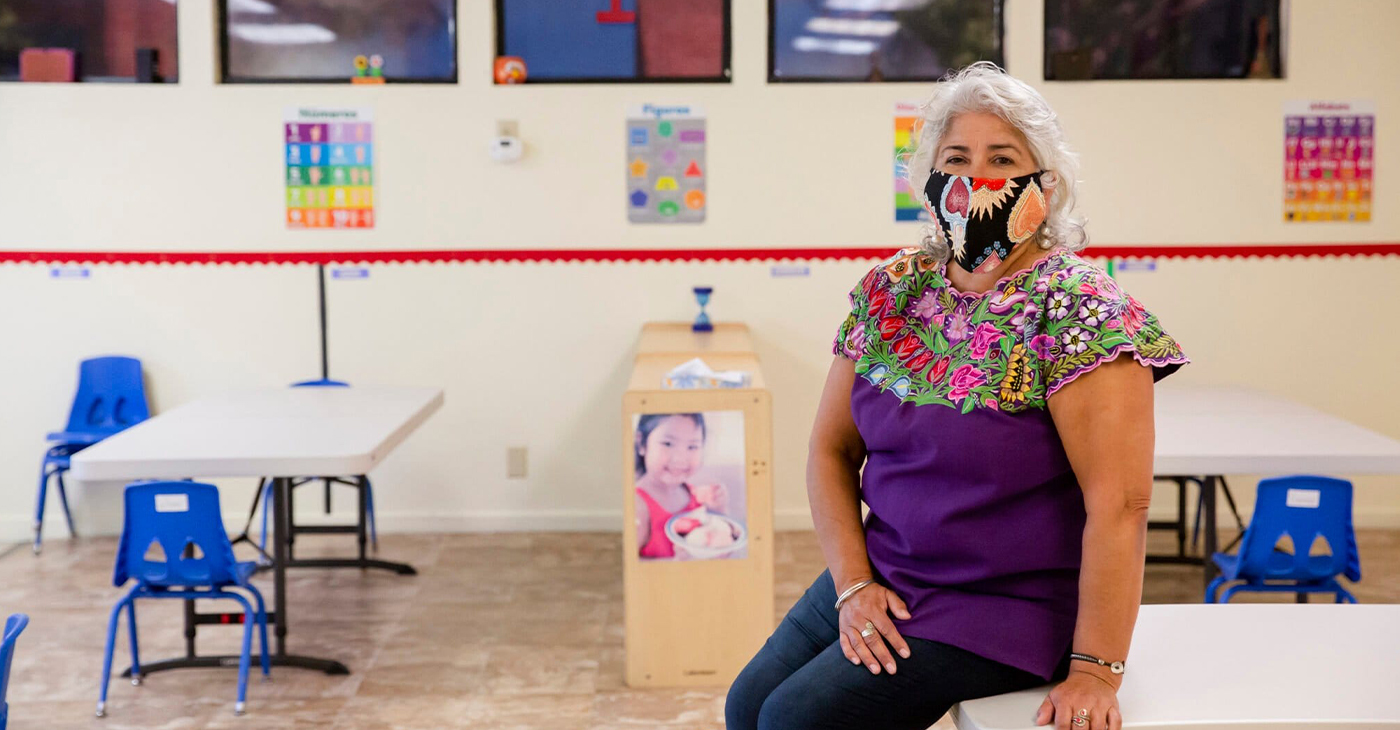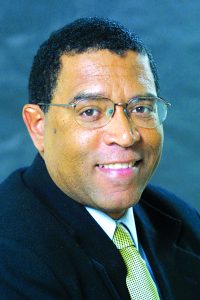Family
How An Early Orthodontist Visit Can Head Off A Child’s Jaw Problems
PASADENA JOURNAL — While it may seem premature to take a 7-year-old child to the orthodontist, such an early visit can save thousands of dollars in future dental issues.
While it may seem premature to take a 7-year-old child to the orthodontist, such an early visit can save thousands of dollars in future dental issues.
“Jaw issues especially are much more easily fi xed when children are young,” says Dr. Stuart Frost, an orthodontist and author of The Artist Orthodontist: Creating An Artistic Smile is More Than Just Straightening Teeth (www.drstuartfrost.com). “This includes imbalances of the muscles of the face along with tongue and tooth-positioning problems.”
It is easier to correct skeletal jaw problems at an early age while guiding the teeth into the mouth correctly. Doing so maximizes the ability to create or maintain space in the child’s jaws to allow teeth to grow in, and minimizes the opportunity for the teeth coming in wrong, says Dr. Frost.
Dr. Frost says that after about age 9, the window closes on fixing most of the problems easily. At that age, he says, the seam in the roof of the mouth fuses into solid bone and once it does, widening the upper palate from side-to-side is nearly impossible. If the problem is addressed before that happens, the upper jaw can be more easily expanded to create the space needed for all the teeth to come in, he says.
If a child snores, has sleep issues, bedwetting or is grinding their teeth they should have an airway evaluation done by an orthodontist as soon as possible, says Dr. Frost.
“Waiting even a few years can have a lifetime impact,” Dr. Frost says. “By the time the child hits 11 or 12 years old and the adult teeth are coming in, the problems multiply. If we can fix the issues while the child’s bones are still developing, it will be easier and a lot cheaper to accomplish instead of after all the damage has been done.”
Many of the issues can be remedied by the orthodontist applying braces and an expander appliance to coax the structures into balance. Not tackling these issues early can cause issues such as a flaring of teeth, underbites and adult teeth erupting sideways through the gums.
Dr. Frost says other issues that could get complicated if they are not treated early include:
Breathing problems. These breathing issues lead children to thrust their tongues and heads forward when asleep, causing further misalignment of the jaw and interrupted sleep. Adults with sleep apnea are fatigued and unrefreshed, causing their bodies to break down as the cells become slowly malnourished.
Immune system Issues. Immune system issues unknown to humans in past generations are common today. The immune system can be impacted by dental problems at an early age.
Increased allergy problems. Allergies can play a crucial role in childhood development of the face, jaw, and teeth. They can be an early warning sign that your child’s teeth aren’t growing properly.
Jaw alignment problems. -Misaligned jaws lead to chronic head, neck and shoulder pain.
“The bottom line is that an early investment in your child’s health will almost certainly pay off in time and money,” Dr. Frost says, “as well as enhance their future health.”
[Dr. Stuart Frost, author of The Artist Orthodontist: Creating An Artistic Smile is More Than Just Straightening Teeth (www.drstuartfrost. com), is an orthodontist and sought-after speaker who has given seminars, lectures, and speeches throughout the world to dentists and the general public on groundbreaking dentistry. He graduated from the University of the Pacific School of Dentistry and has continued his education at the University of Rochester, where he accomplished a one-year fellowship in Temporomandibular Joint Disorder and a two-year certificate in orthodontics.]
This article originally appeared in the Pasadena Journal.
Activism
Report Offers Policies, Ideas to Improve the Workplace Experiences of Black Women in California
The “Invisible Labor, Visible Struggles: The Intersection of Race, Gender, and Workplace Equity for Black Women in California” report by the California Black Women’s Collective Empowerment Institute (CBWCEI), unveiled the findings of a December 2024 survey of 452 employed Black women across the Golden State. Three-fifths of the participants said they experienced racism or discrimination last year and 57% of the unfair treatment was related to incidents at work.

By McKenzie Jackson, California Black Media
Backed by data, a report released last month details the numerous hurdles Black women in the Golden State must overcome to effectively contribute and succeed in the workplace.
The “Invisible Labor, Visible Struggles: The Intersection of Race, Gender, and Workplace Equity for Black Women in California” report by the California Black Women’s Collective Empowerment Institute (CBWCEI), unveiled the findings of a December 2024 survey of 452 employed Black women across the Golden State. Three-fifths of the participants said they experienced racism or discrimination last year and 57% of the unfair treatment was related to incidents at work.
CBWCEI President and CEO Kellie Todd Griffin said Black women have been the backbone of communities, industries, and movements but are still overlooked, underpaid, and undervalued at work.
“The data is clear,” she explained. “Systemic racism and sexism are not just historical injustices. They are active forces shaping the workplace experiences of Black women today. This report is a call to action. it demands intentional polices, corporate accountability, and systemic changes.”
The 16-page study, conducted by the public opinion research and strategic consulting firm EVITARUS, showcases the lived workplace experiences of Black women, many who say they are stuck in the crosshairs of discrimination based on gender and race which hinders their work opportunities, advancements, and aspirations, according to the report’s authors, Todd Griffin and CBWCEI researcher Dr. Sharon Uche.
“We wanted to look at how Black women are experiencing the workplace where there are systematic barriers,” Todd Griffin told the media during a press conference co-hosted by Ethnic Media Services and California Black Media. “This report is focused on the invisible labor struggles of Black women throughout California.”
The aspects of the workplace most important to Black women, according to those surveyed, are salary or wage, benefits, and job security.
However, only 21% of the survey’s respondents felt they had strong chances for career advancement into the executive or senior leadership ranks in California’s job market; 49% felt passed over, excluded from, or marginalized at work; and 48% felt their accomplishments at work were undervalued. Thirty-eight percent said they had been thought of as the stereotypical “angry Black woman” at work, and 42% said workplace racism or discrimination effected their physical or mental health.
“These sentiments play a factor in contributing to a workplace that is unsafe and not equitable for Black women in California,” the report reads.
Most Black women said providing for their families and personal fulfillment motivated them to show up to work daily, while 38% said they were dissatisfied in their current job with salary, supervisors, and work environment being the top sources of their discontent.
When asked if they agree or disagree with a statement about their workplace 58% of Black women said they feel supported at work, while 52% said their contributions are acknowledged. Forty-nine percent said they felt empowered.
Uche said Black women are paid $54,000 annually on average — including Black single mothers, who averaged $50,000 — while White men earn an average of $90,000 each year.
“More than half of Black families in California are led by single Black women,” said Uche, who added that the pay gap between Black women and White men isn’t forecasted to close until 2121.
Bay Area
Five Years After COVID-19 Began, a Struggling Child Care Workforce Faces New Threats
Five years ago, as COVID-19 lockdowns and school closures began, most early educators continued to work in person, risking their own health and that of their families. “Early educators were called essential, but they weren’t provided with the personal protective equipment they needed to stay safe,” said CSCCE Executive Director Lea Austin. “There were no special shopping hours or ways for them to access safety materials in those early and scary months of the pandemic, leaving them to compete with other shoppers. One state even advised them to wear trash bags if they couldn’t find PPE.”

UC Berkeley News
In the first eight months of the COVID-19 pandemic alone, 166,000 childcare jobs were lost across the nation. Significant recovery didn’t begin until the advent of American Rescue Plan Act (ARPA) Child Care Stabilization funds in April 2021.
Today, child care employment is back to slightly above pre-pandemic levels, but job growth has remained sluggish at 1.4% since ARPA funding allocations ended in October 2023, according to analysis by the Center for the Study of Child Care Employment (CSCCE) at UC Berkeley. In the last six months, childcare employment has hovered around 1.1 million.
Yet more than two million American parents report job changes due to problems accessing child care. Why does the childcare sector continue to face a workforce crisis that has predated the pandemic? Inadequate compensation drives high turnover rates and workforce shortages that predate the pandemic. Early childhood educators are skilled professionals; many have more than 15 years of experience and a college degree, but their compensation does not reflect their expertise. The national median hourly wage is $13.07, and only a small proportion of early educators receive benefits.
And now a new round of challenges is about to hit childcare. The low wages paid in early care and education result in 43% of early educator families depending on at least one public support program, such as Medicaid or food stamps, both of which are threatened by potential federal funding cuts. Job numbers will likely fall as many early childhood educators need to find jobs with healthcare benefits or better pay.
In addition, one in five child care workers are immigrants, and executive orders driving deportation and ICE raids will further devastate the entire early care and education system. These stresses are part of the historical lack of respect the workforce faces, despite all they contribute to children, families, and the economy.
Five years ago, as COVID-19 lockdowns and school closures began, most early educators continued to work in person, risking their own health and that of their families. “Early educators were called essential, but they weren’t provided with the personal protective equipment they needed to stay safe,” said CSCCE Executive Director Lea Austin. “There were no special shopping hours or ways for them to access safety materials in those early and scary months of the pandemic, leaving them to compete with other shoppers. One state even advised them to wear trash bags if they couldn’t find PPE.”
The economic impact was equally dire. Even as many providers tried to remain open to ensure their financial security, the combination of higher costs to meet safety protocols and lower revenue from fewer children enrolled led to job losses, increased debt, and program closures.
Eventually, the federal government responded with historic short-term investments through ARPA, which stabilized childcare programs. These funds provided money to increase pay or provide financial relief to early educators to improve their income and well-being. The childcare sector began to slowly recover. Larger job gains were made in 2022 and 2023, and as of November 2023, national job numbers had slightly surpassed pre-pandemic levels, though state and metro areas continued to fluctuate.
Many states have continued to support the workforce after ARPA funding expired in late 2024. In Maine, a salary supplement initiative has provided monthly stipends of $240-$540 to educators working in licensed home- or center-based care, based on education and experience, making it one of the nation’s leaders in its support of early educators. Early educators say the program has enabled them to raise wages, which has improved staff retention. Yet now, Governor Janet Mills is considering cutting the stipend program in half.
“History shows that once an emergency is perceived to have passed, public funding that supports the early care and education workforce is pulled,” says Austin. “You can’t build a stable childcare workforce and system without consistent public investment and respect for all that early educators contribute.”
The Center for the Study of Childcare Employment is the source of this story.
Activism
Ed Chief Thurmond Visits Southern California Schools Fires Impacted
“Schools are the heartbeat of any community’s ability to recover as they provide stable and safe learning spaces for children,” Thurmond said. “That’s why our team has had boots on the ground since the beginning of this tragedy, and we are committed to remaining side-by-side with local leaders to assist in the recovery.”

Tanu Henry, California Black Media
State Superintendent of Public Instruction Tony Thurmond last week visited several school communities in Southern California that have been severely impacted by wildfires.
His visit aimed to assess the damage, provide support, and secure essential resources for the recovery process. As wildfires continue to pose a significant threat to various regions, Thurmond’s says his actions reflect the commitment of the California Department of Education (CDE) to ensuring the safety and well-being of students, educators, and their families.
“Schools are the heartbeat of any community’s ability to recover as they provide stable and safe learning spaces for children,” Thurmond said. “That’s why our team has had boots on the ground since the beginning of this tragedy, and we are committed to remaining side-by-side with local leaders to assist in the recovery.”
During his visit, Thurmond met with local school officials, teachers, and students to understand their immediate needs and long-term concerns. He expressed his commitment to fighting for people affected by the disaster and assured them of the state’s unwavering support. Thurmond also emphasized the importance of mental health services, particularly for students who have experienced trauma due to the wildfires.
Thurmond announced that he has secured financial and logistical assistance to aid in the rebuilding and restoration of school facilities. This includes funding for temporary classrooms, educational materials, and infrastructure repair. The CDE says its goal is expedite the recovery process and minimize disruptions to students’ education.
Earlier in the week, Thurmond finalized a partnership between the CDE and Airbnb to provide short-term housing for school staff in the Pasadena Unified School District (PUSD).
The CDE has also partnered with the SupplyBank.org to collect and distribute critical resources to school communities. A similar agreement with curriculum providers and tech manufacturers will lead on the replacement of school materials damaged by the fires.
-

 Activism4 weeks ago
Activism4 weeks agoOakland Post Endorses Barbara Lee
-

 Activism3 weeks ago
Activism3 weeks agoOakland Post: Week of April 2 – 8, 2025
-

 #NNPA BlackPress3 weeks ago
#NNPA BlackPress3 weeks agoTrump Profits, Black America Pays the Price
-

 Activism2 weeks ago
Activism2 weeks agoOakland Post: Week of April 9 – 15, 2025
-

 #NNPA BlackPress3 weeks ago
#NNPA BlackPress3 weeks agoHarriet Tubman Scrubbed; DEI Dismantled
-

 #NNPA BlackPress3 weeks ago
#NNPA BlackPress3 weeks agoTrump Targets a Slavery Removal from the National Museum of African-American History and Culture
-

 #NNPA BlackPress3 weeks ago
#NNPA BlackPress3 weeks agoLawmakers Greenlight Reparations Study for Descendants of Enslaved Marylanders
-

 #NNPA BlackPress3 weeks ago
#NNPA BlackPress3 weeks agoNew York Stands Firm Against Trump Administration’s Order to Abandon Diversity in Schools
















































